No products in the cart.

In an era characterised by rapid technological advancements, the education industry is undergoing a transformative shift with various teaching methods and educational policies. This has given rise to a growing need to find an effective teaching and learning solutions for schools. Hybrid learning, an innovative approach that combines traditional classroom instruction with online learning, has gained significant traction in schools worldwide. This blog post explores the pressing need for hybrid learning in schools and highlights its profound impact on education. We will delve into the perspectives of both principals and teachers, emphasizing the importance of embracing hybrid learning in the classroom.
The Need for Hybrid Learning:
Traditional teaching methods are valuable, but often face limitations in catering to the diverse needs and preferences of students such as:
- Schedule stiffness
- Negligible classroom interaction
- Passive learning
- Emphasis on rote-memorization
- Limited collaboration and communication
This is where hybrid learning comes in, bridging the gap between traditional and online education. According to the National Education Policy (NEP) 2020, which aims to revolutionize education in India, teachers must use hybrid teaching-learning methods for the holistic development of students, fostering conceptual understanding, conceptual clarity, and improved learning outcomes. As per NEP guidelines, schools must integrate hybrid learning to create engaging and interactive learning environments that facilitate academic growth and development. With the increase in technology usage all over, it is imperative that technology be integrated into classrooms through hybrid learning.

Creating a Hybrid Learning Plan for schools:
To implement hybrid learning effectively, schools need to devise a well-structured plan that aligns with NEP objectives and accounts for its specific academic needs. It should encompass various elements, including:
- Curriculum Development
- NEP aligned teacher training program
- Formative Assessments
- Preparation for the future
Curriculum Development: The integration of hybrid learning requires the development of the school curriculum. Teachers must design a comprehensive curriculum that incorporates interactive learning activities and formative assessments to ensure a seamless blend of traditional and online instruction. This process includes adapting the curriculum to the evolving needs of students and incorporating an NEP ready curriculum to foster a holistic teaching-learning environment in the classroom.
NEP aligned teacher training program: Implementing hybrid learning necessitates equipping teachers with the necessary teaching skills to succeed in the digital landscape effectively. Schools must invest in professional development/teacher training programs that upscale the knowledge of teachers, enhance their digital proficiency, and integrate hybrid learning into their teaching strategies. Hybrid learning helps teachers implement effective teaching methods through which they can increase their skills and teaching efficiency. Including hybrid learning in teacher training programs helps them get accustomed to digital teaching methods required for the future.
Formative Assessments: Hybrid learning offers the advantage of continuous formative assessments, enabling teachers to monitor student progress regularly. Implementing formative assessments in hybrid learning environments helps identify areas of improvement, personalize instruction, and provide timely feedback to students. By utilizing data-driven insights from these assessments, educators can adjust their teaching methods and tailor interventions to reach optimal student learning outcomes.
Preparation for the future:
Hybrid learning offers a multitude of 21st century skills that can also easily translate into life skills. These skills are inclusive of research skills, self-learning, self-engagement where the teacher helps students become more self-driven, responsible, and technology literate, where the use of e-learning materials increases the learner’s ability to use a computer.
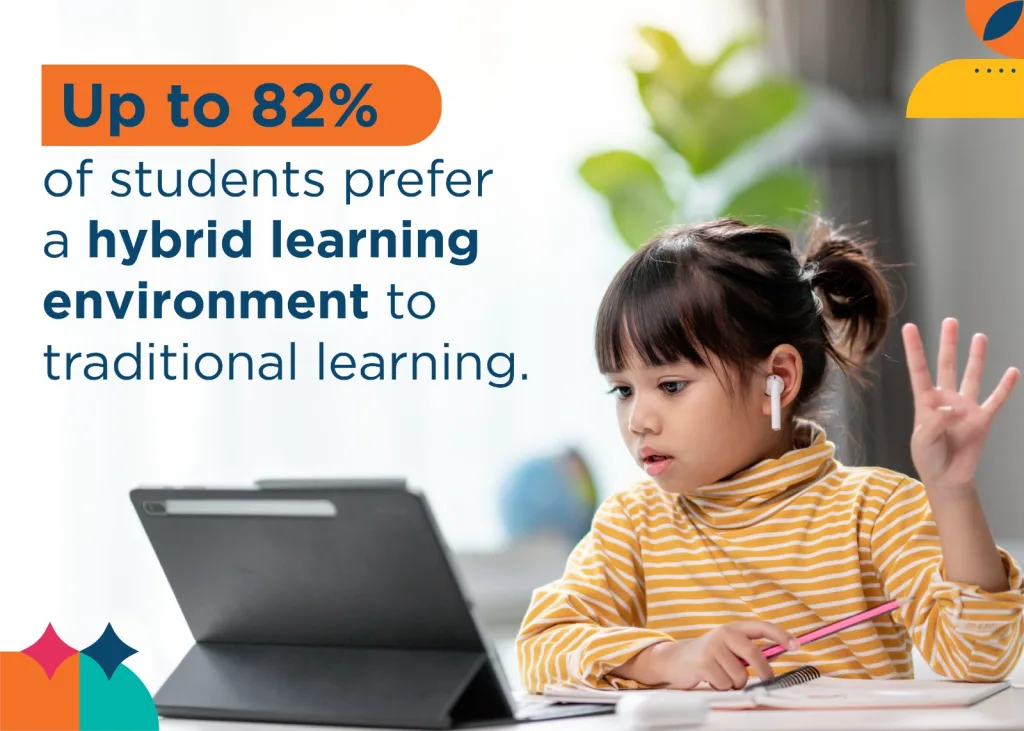
Benefits of Hybrid Learning:
The implementation of hybrid learning in schools yields numerous benefits for students, teachers, and the overall learning environment:
Engaging and Interactive Learning: Hybrid learning facilitates engaging and interactive learning experiences, providing teachers and students with access to a wide range of multimedia resources, online simulations, virtual labs, and collaborative platforms. This dynamic learning environment fosters student participation, critical thinking, problem-solving, and creativity.
Personalized Learning: With hybrid learning, educators can tailor instruction to suit each student's individual needs and learning pace. EdTech tools and online platforms enable adaptive learning, where content and assessments are customized to address students' specific strengths, weaknesses, and learning styles. This personalized approach helps teachers promote student autonomy, self-paced learning, and achieve conceptual understanding.
Professional flexibility: Hybrid learning offers teachers the flexibility to access teaching materials and resources anytime and anywhere. By leveraging EdTech learning tools, teachers can develop quality teaching methods, review content as needed, and access supplementary materials to reinforce their students’ understanding. This flexibility ensures that teachers can effectively overcome any teaching difficulties they may face in education.
Holistic Learning Approach: Hybrid learning facilitates a holistic learning experience by integrating academic, social, emotional, and creative aspects of education. By incorporating project-based learning, interdisciplinary studies, and real-world applications, hybrid learning nurtures well-rounded individuals who can apply their knowledge in practical settings.
Improved Teaching Methods: Hybrid learning empowers teachers to diversify their instructional strategies, integrating various educational technologies and interactive resources into their lessons. Given the access of numerous digital learning materials, teachers can engage students through multimedia presentations, virtual field trips, gamified learning, and collaborative projects. These innovative approaches foster active student engagement, enhance teaching methods, and create a dynamic learning environment.
Hybrid learning from a Principal's Perspective:
Principals play a crucial role in championing and implementing hybrid learning within their schools:
Curriculum Integration: Principals can encourage the integration of hybrid learning in the development of a school curriculum, aligning it with NEP 2020 recommendations and ensuring a seamless blend of traditional and online instruction. By involving teachers and stakeholders in the curriculum development process, principals can create an integrated learning experience that supports students' academic progress.
Resource Allocation: Principals are responsible for allocating resources to procure the necessary hardware, software, and connectivity infrastructure required for successful hybrid learning implementation. This includes investing in reliable sources or partners, devices for students, and interactive learning resources.
Collaboration and Partnerships: Principals can foster collaboration and partnerships with EdTech providers, universities, and other educational institutions. By strengthening these education bonds, principals can gain access to cutting-edge learning solutions, professional development opportunities for teachers, and ongoing support for the successful implementation of hybrid learning in their schools.

Benefits of Hybrid Learning in EdTech:
There are two key benefits that Hybrid learning through EdTech offers in education:
Accessibility and Inclusivity: EdTech tools help make education accessible to all students facing barriers to education. By leveraging technology, schools can create inclusive learning environments that cater to the diverse needs of all students.
Data-Driven Insights: EdTech platforms provide valuable data and analytics, offering insights into student performance, engagement, and learning outcomes. Teachers can utilize this data to identify trends, track progress, and adopt instructional strategies accordingly.
Conclusion:
Hybrid learning, in alignment with NEP 2020, represents a transformative approach to education. By integrating technology with education, schools can create engaging and interactive learning environments that foster conceptual understanding, personalization, and academic growth. Principals and teachers play pivotal roles in driving this educational revolution, ensuring curriculum development, providing professional development opportunities, and embracing innovative teaching practices. By harnessing the potential of hybrid learning and leveraging EdTech effectively, schools can equip students with 21st century skills needed to thrive in the digital age and beyond.
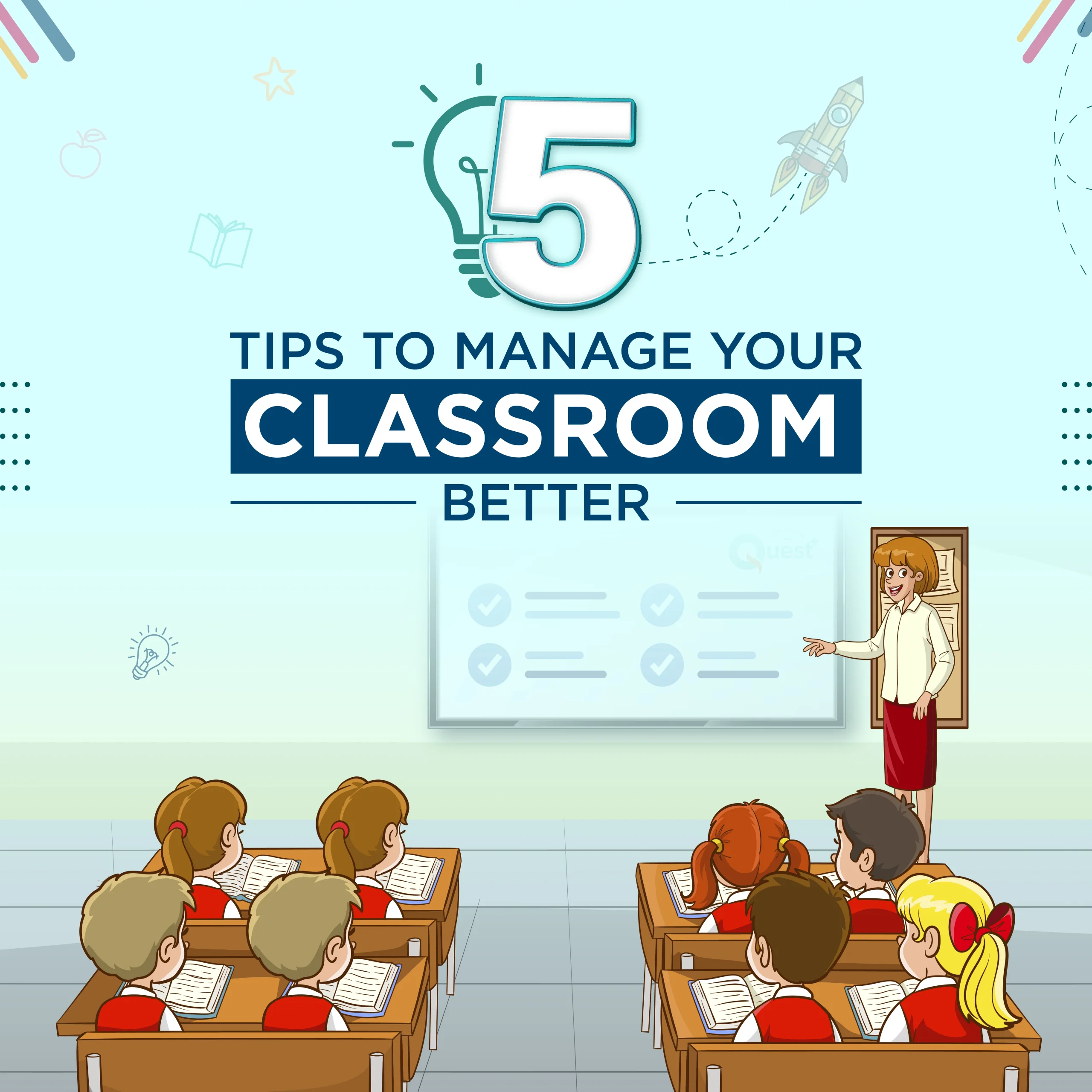
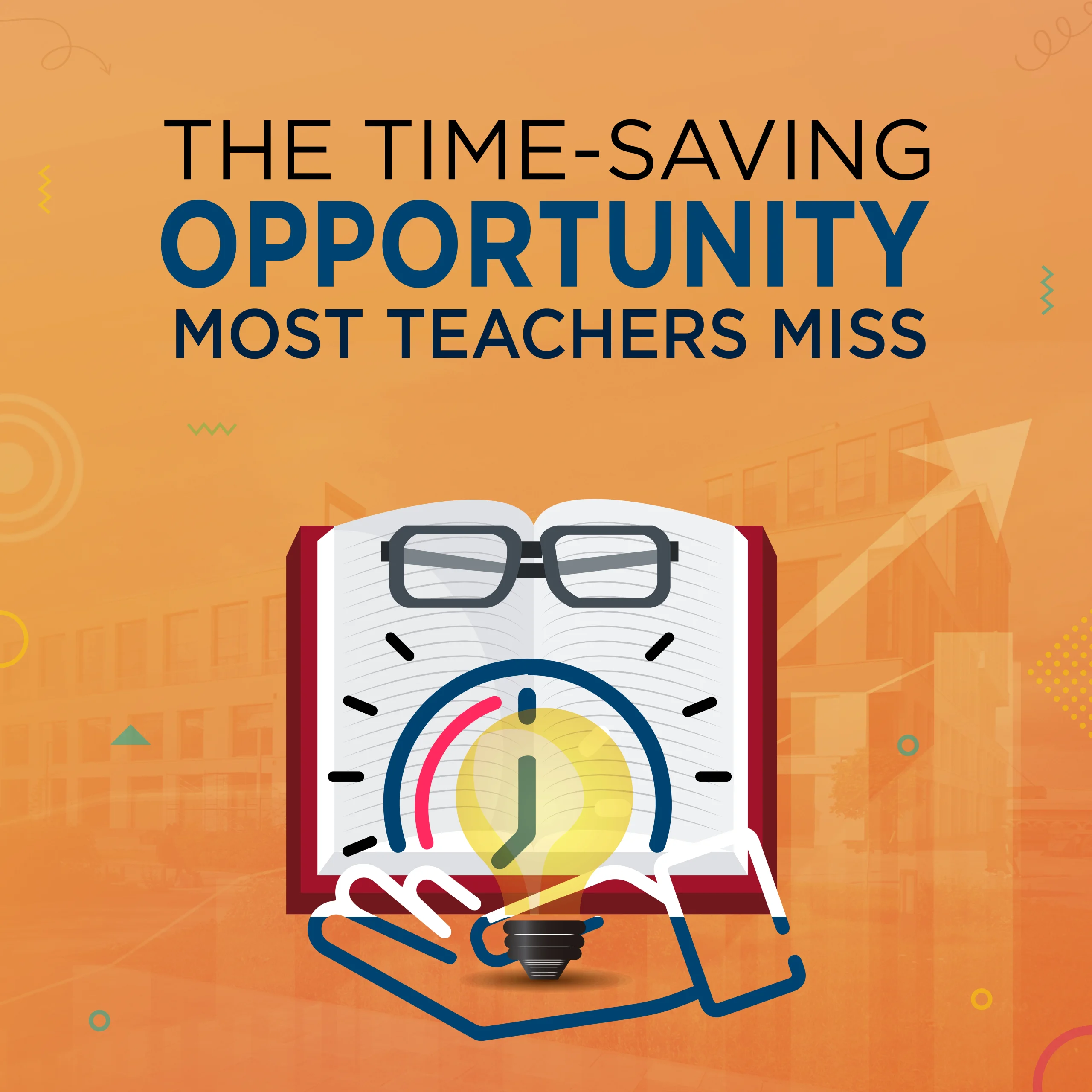

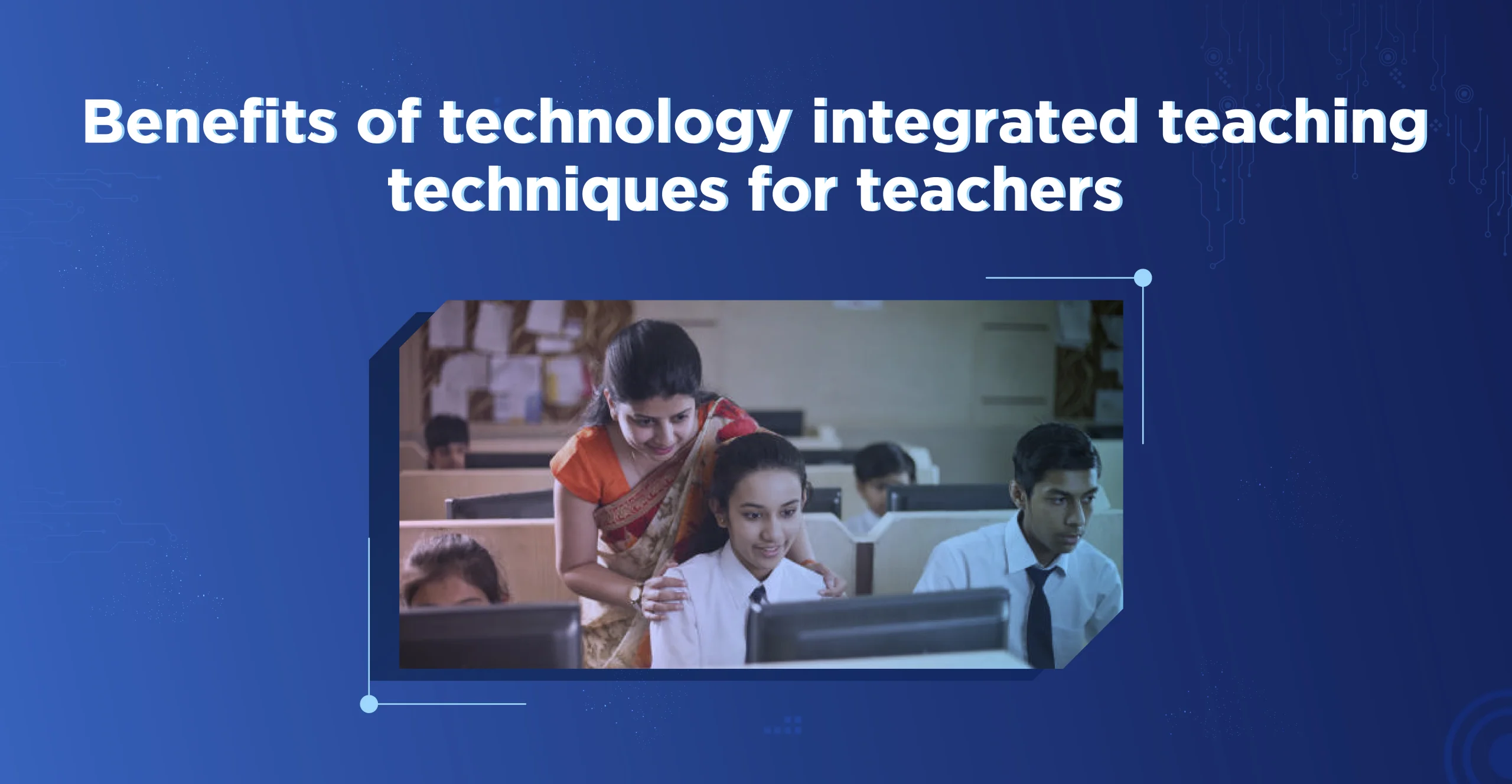
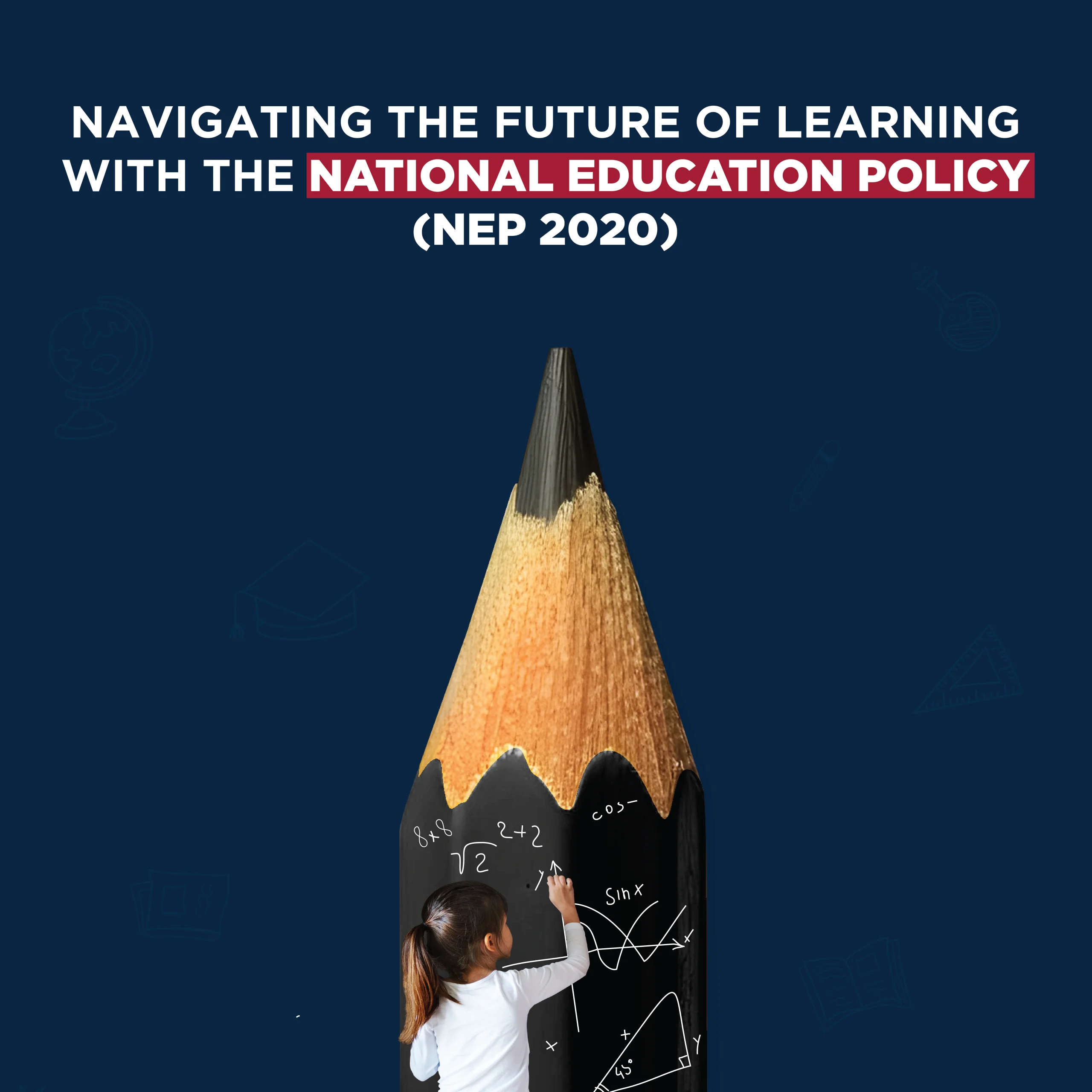
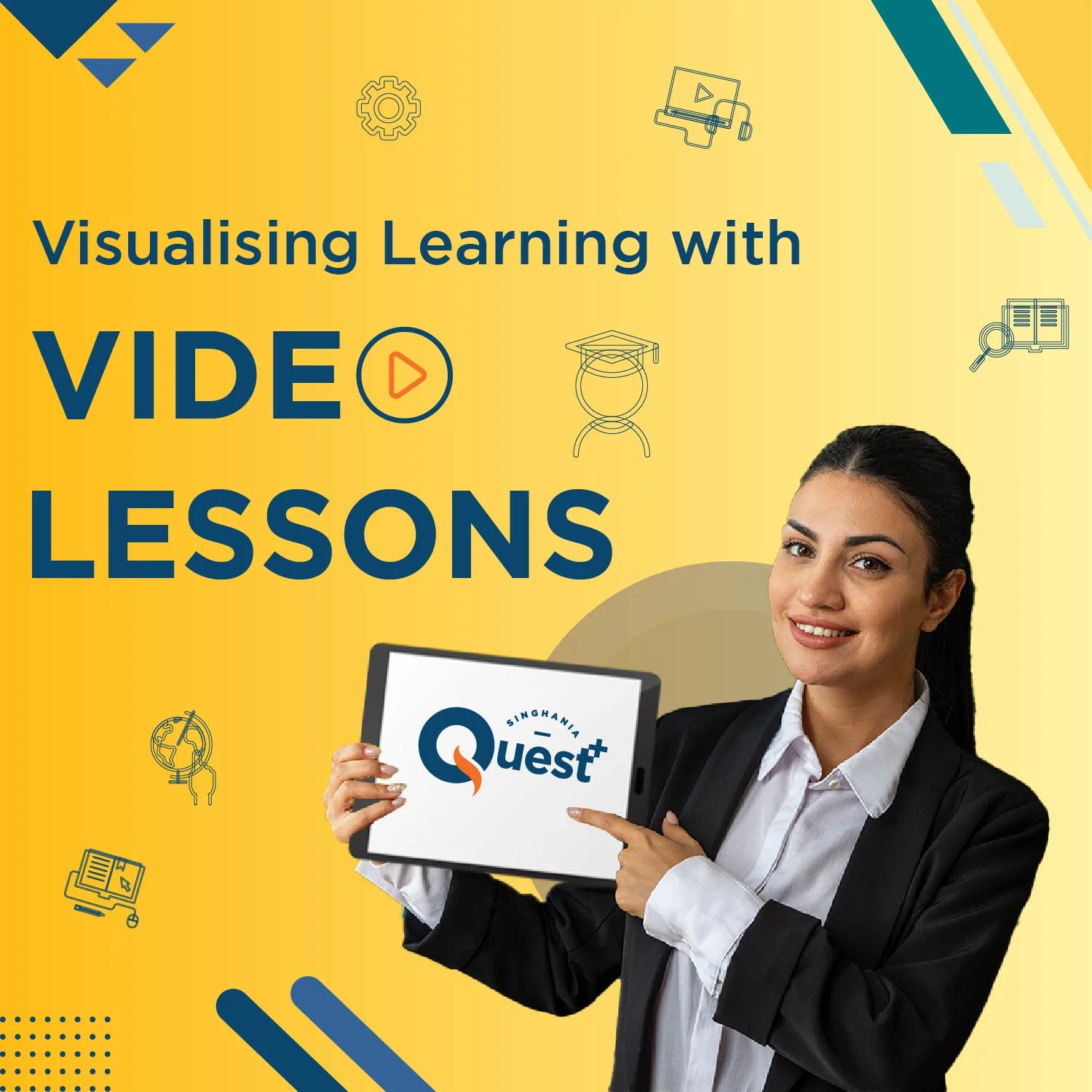
In an era characterised by rapid technological advancements, the education industry is undergoing a transformative shift with various teaching methods and educational policies. This has given rise to a growing need to find an effective teaching and learning solutions for schools. Hybrid learning, an innovative approach that combines traditional classroom instruction with online learning, has gained significant traction in schools worldwide. This blog post explores the pressing need for hybrid learning in schools and highlights its profound impact on education. We will delve into the perspectives of both principals and teachers, emphasizing the importance of embracing hybrid learning in the classroom.
The Need for Hybrid Learning:
Traditional teaching methods are valuable, but often face limitations in catering to the diverse needs and preferences of students such as:
- Schedule stiffness
- Negligible classroom interaction
- Passive learning
- Emphasis on rote-memorization
- Limited collaboration and communication
This is where hybrid learning comes in, bridging the gap between traditional and online education. According to the National Education Policy (NEP) 2020, which aims to revolutionize education in India, teachers must use hybrid teaching-learning methods for the holistic development of students, fostering conceptual understanding, conceptual clarity, and improved learning outcomes. As per NEP guidelines, schools must integrate hybrid learning to create engaging and interactive learning environments that facilitate academic growth and development. With the increase in technology usage all over, it is imperative that technology be integrated into classrooms through hybrid learning.

Creating a Hybrid Learning Plan for schools:
To implement hybrid learning effectively, schools need to devise a well-structured plan that aligns with NEP objectives and accounts for its specific academic needs. It should encompass various elements, including:
- Curriculum Development
- NEP aligned teacher training program
- Formative Assessments
- Preparation for the future
Curriculum Development: The integration of hybrid learning requires the development of the school curriculum. Teachers must design a comprehensive curriculum that incorporates interactive learning activities and formative assessments to ensure a seamless blend of traditional and online instruction. This process includes adapting the curriculum to the evolving needs of students and incorporating an NEP ready curriculum to foster a holistic teaching-learning environment in the classroom.
NEP aligned teacher training program: Implementing hybrid learning necessitates equipping teachers with the necessary teaching skills to succeed in the digital landscape effectively. Schools must invest in professional development/teacher training programs that upscale the knowledge of teachers, enhance their digital proficiency, and integrate hybrid learning into their teaching strategies. Hybrid learning helps teachers implement effective teaching methods through which they can increase their skills and teaching efficiency. Including hybrid learning in teacher training programs helps them get accustomed to digital teaching methods required for the future.
Formative Assessments: Hybrid learning offers the advantage of continuous formative assessments, enabling teachers to monitor student progress regularly. Implementing formative assessments in hybrid learning environments helps identify areas of improvement, personalize instruction, and provide timely feedback to students. By utilizing data-driven insights from these assessments, educators can adjust their teaching methods and tailor interventions to reach optimal student learning outcomes.
Preparation for the future:
Hybrid learning offers a multitude of 21st century skills that can also easily translate into life skills. These skills are inclusive of research skills, self-learning, self-engagement where the teacher helps students become more self-driven, responsible, and technology literate, where the use of e-learning materials increases the learner’s ability to use a computer.

Benefits of Hybrid Learning:
The implementation of hybrid learning in schools yields numerous benefits for students, teachers, and the overall learning environment:
Engaging and Interactive Learning: Hybrid learning facilitates engaging and interactive learning experiences, providing teachers and students with access to a wide range of multimedia resources, online simulations, virtual labs, and collaborative platforms. This dynamic learning environment fosters student participation, critical thinking, problem-solving, and creativity.
Personalized Learning: With hybrid learning, educators can tailor instruction to suit each student's individual needs and learning pace. EdTech tools and online platforms enable adaptive learning, where content and assessments are customized to address students' specific strengths, weaknesses, and learning styles. This personalized approach helps teachers promote student autonomy, self-paced learning, and achieve conceptual understanding.
Professional flexibility: Hybrid learning offers teachers the flexibility to access teaching materials and resources anytime and anywhere. By leveraging EdTech learning tools, teachers can develop quality teaching methods, review content as needed, and access supplementary materials to reinforce their students’ understanding. This flexibility ensures that teachers can effectively overcome any teaching difficulties they may face in education.
Holistic Learning Approach: Hybrid learning facilitates a holistic learning experience by integrating academic, social, emotional, and creative aspects of education. By incorporating project-based learning, interdisciplinary studies, and real-world applications, hybrid learning nurtures well-rounded individuals who can apply their knowledge in practical settings.
Improved Teaching Methods: Hybrid learning empowers teachers to diversify their instructional strategies, integrating various educational technologies and interactive resources into their lessons. Given the access of numerous digital learning materials, teachers can engage students through multimedia presentations, virtual field trips, gamified learning, and collaborative projects. These innovative approaches foster active student engagement, enhance teaching methods, and create a dynamic learning environment.
Hybrid learning from a Principal's Perspective:
Principals play a crucial role in championing and implementing hybrid learning within their schools:
Curriculum Integration: Principals can encourage the integration of hybrid learning in the development of a school curriculum, aligning it with NEP 2020 recommendations and ensuring a seamless blend of traditional and online instruction. By involving teachers and stakeholders in the curriculum development process, principals can create an integrated learning experience that supports students' academic progress.
Resource Allocation: Principals are responsible for allocating resources to procure the necessary hardware, software, and connectivity infrastructure required for successful hybrid learning implementation. This includes investing in reliable sources or partners, devices for students, and interactive learning resources.
Collaboration and Partnerships: Principals can foster collaboration and partnerships with EdTech providers, universities, and other educational institutions. By strengthening these education bonds, principals can gain access to cutting-edge learning solutions, professional development opportunities for teachers, and ongoing support for the successful implementation of hybrid learning in their schools.

Benefits of Hybrid Learning in EdTech:
There are two key benefits that Hybrid learning through EdTech offers in education:
Accessibility and Inclusivity: EdTech tools help make education accessible to all students facing barriers to education. By leveraging technology, schools can create inclusive learning environments that cater to the diverse needs of all students.
Data-Driven Insights: EdTech platforms provide valuable data and analytics, offering insights into student performance, engagement, and learning outcomes. Teachers can utilize this data to identify trends, track progress, and adopt instructional strategies accordingly.
Conclusion:
Hybrid learning, in alignment with NEP 2020, represents a transformative approach to education. By integrating technology with education, schools can create engaging and interactive learning environments that foster conceptual understanding, personalization, and academic growth. Principals and teachers play pivotal roles in driving this educational revolution, ensuring curriculum development, providing professional development opportunities, and embracing innovative teaching practices. By harnessing the potential of hybrid learning and leveraging EdTech effectively, schools can equip students with 21st century skills needed to thrive in the digital age and beyond.
